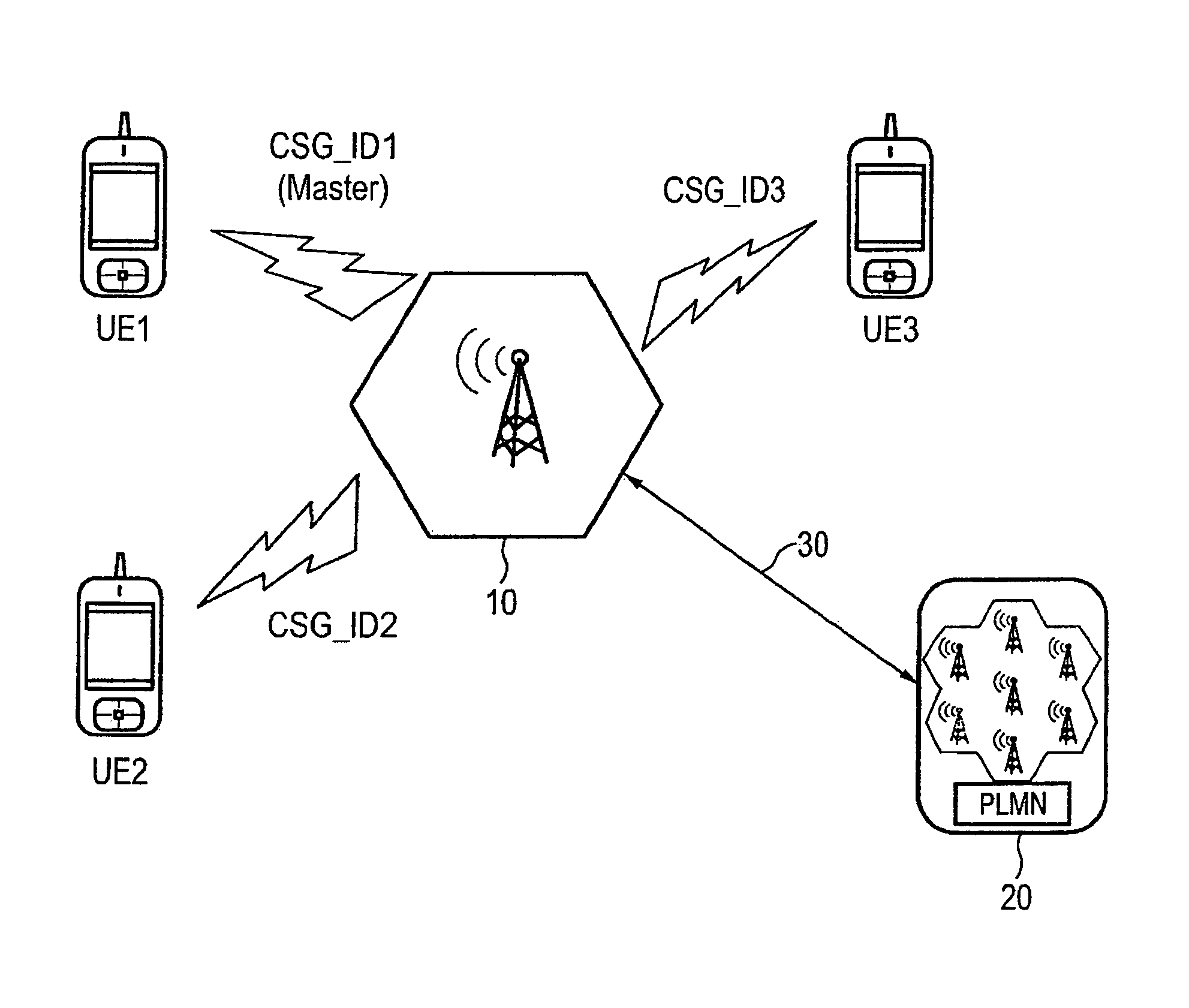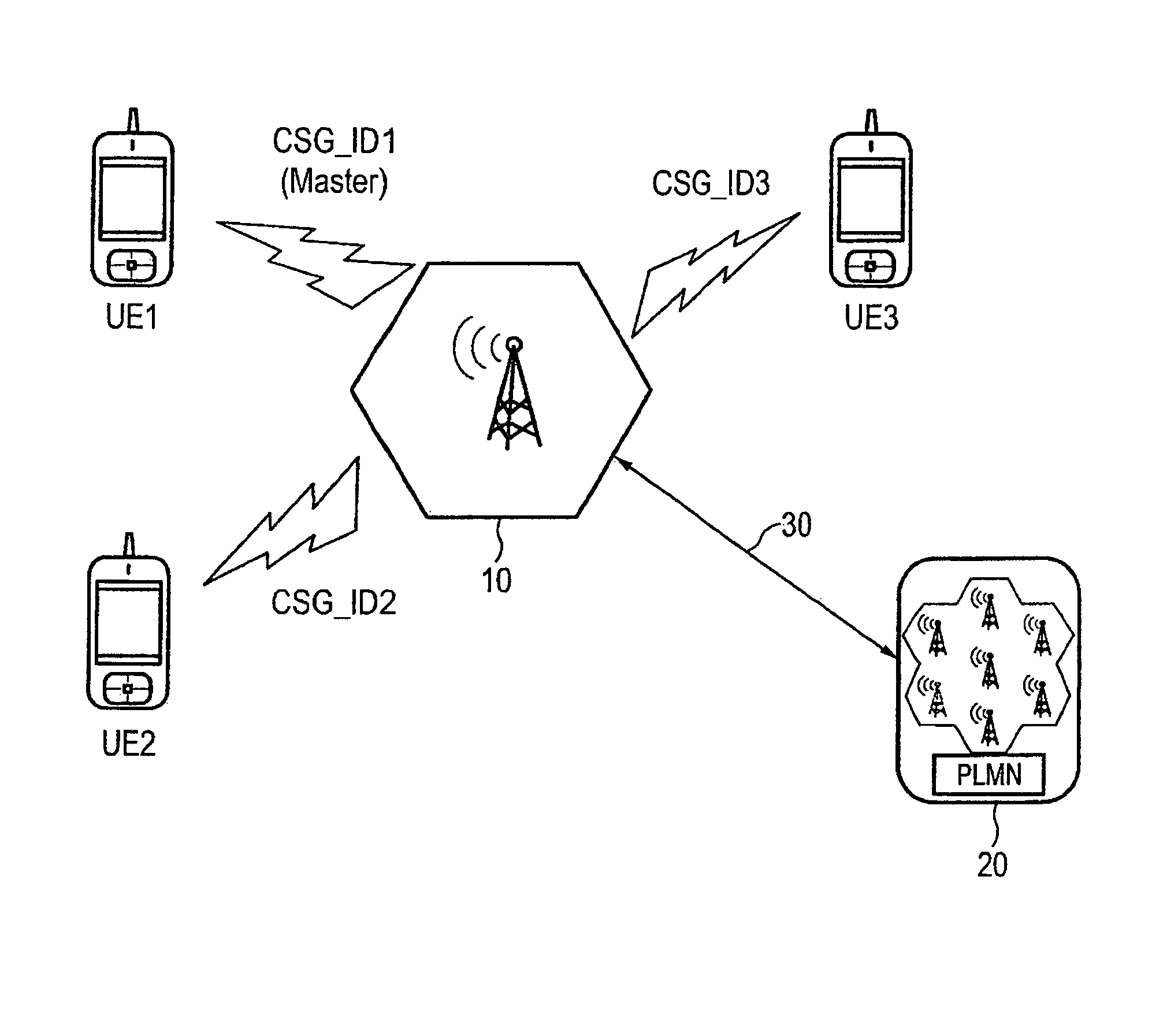Method for operating a closed subscriber group (CSG) cell for open network access
- Summary
- Abstract
- Description
- Claims
- Application Information
AI Technical Summary
Benefits of technology
Problems solved by technology
Method used
Image
Examples
Embodiment Construction
[0020]The drawing shows a cell 10 which is available solely for a closed subscriber group. Accordingly cell 10 is a so-called CSG cell. CSG stands for closed subscriber group.
[0021]In the example shown schematically the CSG cell 10 is operated by a hotel chain on the grounds of the hotel and allows access to network services via the cell 10 for the following three subscriber groups (the respective registered subscribers and the respectively assigned cell terminals are not distinguished in the groups):
[0022]1. Any registered subscribers UE1 of a public land mobile network PLMN 20
[0023]2. Hotel guests UE2
[0024]3. Hotel employees UE3
[0025]In this case the CSG cell 10 will emit three different cell identities CSGJDD1, CSG_ID2, CSG_ED3 in parallel and all three indicated groups of subscribers UE1, UE2, UE3 will receive the three cell identities CSGJD1, CSG_ID2, CSGJD3 emitted in parallel and will compare them to a positive list (white list) of authorized cell identities stored in the res...
PUM
 Login to View More
Login to View More Abstract
Description
Claims
Application Information
 Login to View More
Login to View More - R&D
- Intellectual Property
- Life Sciences
- Materials
- Tech Scout
- Unparalleled Data Quality
- Higher Quality Content
- 60% Fewer Hallucinations
Browse by: Latest US Patents, China's latest patents, Technical Efficacy Thesaurus, Application Domain, Technology Topic, Popular Technical Reports.
© 2025 PatSnap. All rights reserved.Legal|Privacy policy|Modern Slavery Act Transparency Statement|Sitemap|About US| Contact US: help@patsnap.com


